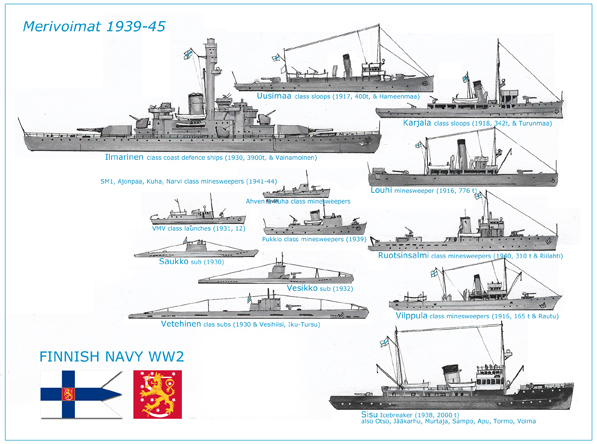
Merivoimat, the sand grain in the Russian boot
The deeds of the Finnish Infantry in 1939 against the Soviet juggernaut during the fabled “Winter war” are well known. Lesser known is that at sea, the situation was as desperate with the Finns suffering a numeric inferiority of almost twenty to one. Despite their small size, the Finnish Navy (including its coastal forts) managed to inflict losses and disrupted Soviet merchant shipping during both the Winter and Continuation wars.
Note: Despite the menu entry of Finland for WW2 is placed in the axis, it should be clear that it never was official. At the contrary the country, neutral, was supported by western powers, France and Britain, which considered USSR after the Pact with Germany as a potential adversary. At some pooint Churchill even studied the possibility of sending a relief army through Sweden, but the latter refused. The later rapporchement of Marshal Mannerheim on Germany was more a matter of common defence against USSR and weapons procurement than driven by any ideology but anti-bolshevism. As a matter of fact, the Finns found an agreement with USSR later in 1944 and fought the Germans until the end of the war. Postwar, Finland was not part of the Warsaw Pact and like Sweden, maintained a strong Cold War neutrality policy. Its procurement was partly domestic and soviet-based.
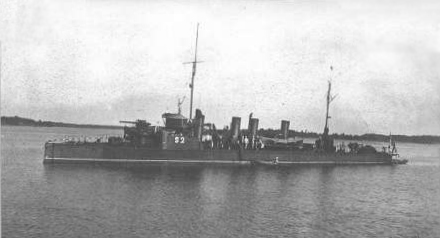
Finnish TB S2, former Russian Sokol. All three were retired before ww2.
Composition of the fleet
At first glance, the Finnish Navy relied heavily on mines to protect its assets. There were no destroyers in the fleet and the only three torpedo boats in service dated back to 1899. However, a squadron of five German-built Submarines and MTBs completed a solid defensive fleet composition centered around a pair of massive coast defense ships, which were nearly battleships in the context of the Baltic Sea: The Ilmarinen class.
Planned Articles
- Coastal BB Vainamoinen
- Finnish ww2 submarines
- Saukko
- Vetehinen class
- Vesikko class
- Finnish ww2 minelayers
- Hämeenmaa class
- Karjala class
- Ruotsinsalmi class
- Pukkio class
- Vilpulla class
- Viipuri class
- Ahven class
- Kuha class
- Rautu class
- Ajonpää class
- Finnish MBTs
- Sisu class
- Isku
- Nuoli class
- Jimy class
- Hurja class
- Taisto class
- SM class
- VMV class
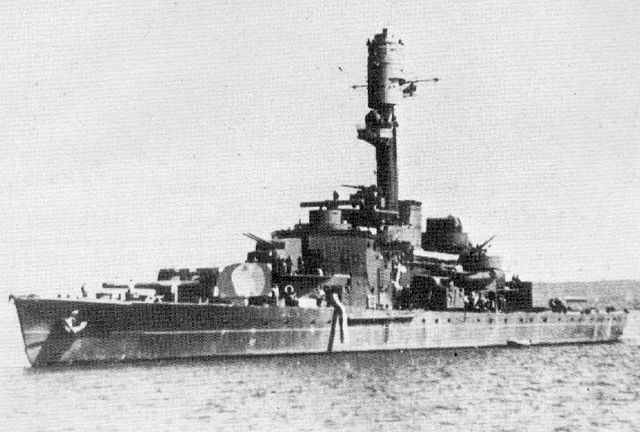
Vainamoinen in 1939
History: Origins
Finland was since the Napoleonic wars a Russian Grand Duchy, and obtained her independence in 1917, seizing the opportunity during the Russian revolution. She was fully independent with a constitution and established institutions in 1918, first as a Kingdom, before later becoming a Republic. At that time, the Navy (Merivoimat) was constituted from the remnants of the local Russian squadrons abandoned in Finnish ports, a collection of prewar ships mostly in a bad state.
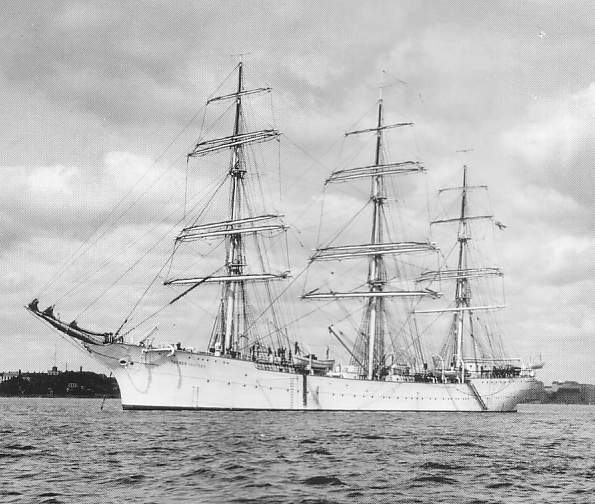
Suomen Joutsen, 1932. This was a former ex-German -ex-French 1902 Nantes three square rigged masts steel hull tall ship.
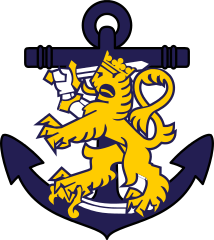
Finnish Naval Emblem
In the 1920s, as the USSR reinforced its army and ambitions, nearby Finland saw herself as a potential target with only a modest army and nearly no naval or air power. Out of an already modest military budget, there was little left for naval ambitions, with the Finnish frontier being the focus of all the military’s attention. However, in 1928 parliament eventually voted for a naval rearmament plan that was to be defensive and centered around two massive defense ships, submarines, MTBs, and mine warfare ships. However, the navy would have to make do with this into the 1940s, as, with increased Russian troops on the borders, the Finnish army once again took precedence.
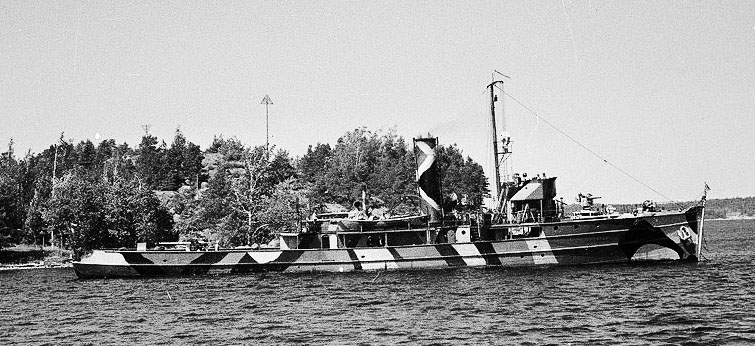
Minelayer Karjala in June 1941
Prior to 1937, the Navy counted these ships, stricken because of their age:
-Three S1 class TBs (260 t ships, 1899, from seven Russian TBs of the Poslusnyi class, one foundered 1925, two stricken 1930). There were also C1-C4 of the 1902, 150 t class, later returned to Russia.
-Klas Horn class sloops: Two 1891, 420 t ships, former Elbing-built Russian TBs Voievoda and Posadnik, both stricken in 1937.
-5 MT class minesweepers (1916, 50 tons, stricken 1925)
-Motors launches VMV3 (burned 1931), VMV4 (stricken 1939), VMV7 (explosion 1933).
Naval assets in 1939
The Finnish Navy found herself threatened in 1939 by the invasion of the Baltic states of Estonia and Latvia, which were forced to give their ports to the Soviet navy. Finland was “invited” to join the USSR, but rejected Soviet demands, and was shortly after invaded on November 30th, 1939.
From then on, the Navy contributed to fending off any Soviet attempt to make an amphibious assault, constraining the operations to the front held by the Finnish Army.
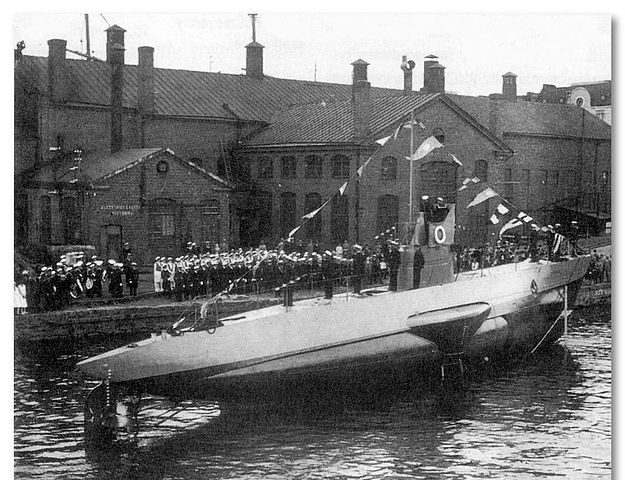
Coastal Finnish submarine Saukko at launch. She was too slow to operate effectively.
At that time, the Finnish Navy comprised:
2 coastal battleships (Vainamoinen class, 1930)
5 submarines: -Coastal submarines Saukko (1930), and Vesikko (1932), and those of the larger Vetehinen class (1930).
4 sloops: used as gunboats, two of the Hämeenmaa class and two of the Karjala class, 400 and 342 tons respectively.
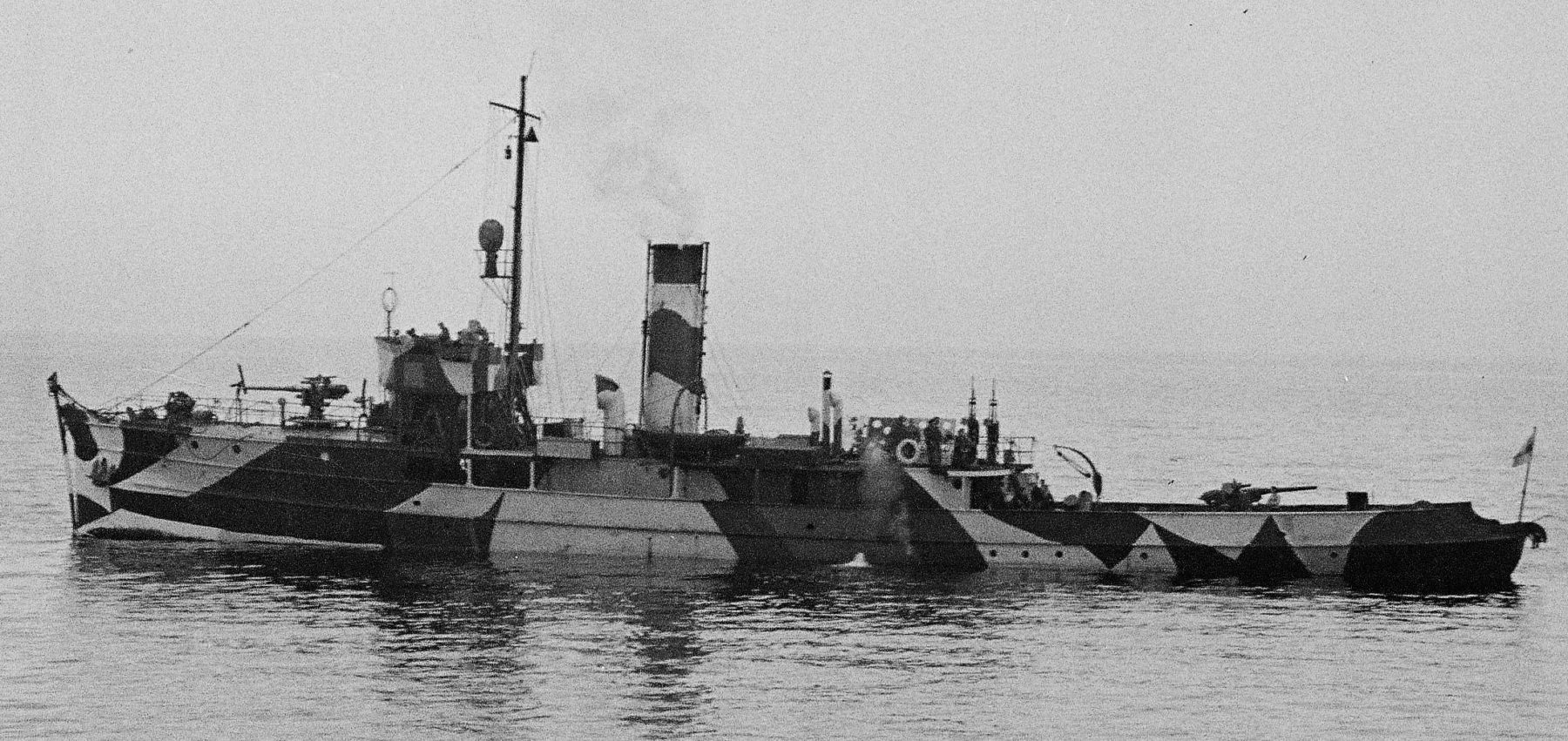
6 minelayers: Louhi, 1916, 776 t, ex-Russian Voin. Pommi, Miina (1916, 80t), Paukko, Lieska, Loimu (1915, 60t) all ex-Russian.
19 minesweepers:
-5 class Ahven (1936, 17 tons)
-2 class Vilppula (1916, 165t)
-11 of various types, A37-45 class, AF2, BVA, BVD and Haukka about 12 tons launches. Three were lost during the winter war.
7 MTBs:
-2 class Sisu (1916, ex-Italian MAS 220-221, purchased 1920 as MTV1,2)
-4 class Nuoli (1928, Thornycroft, first pair, and design for the others)
-Isku (1926)
15 Motor Launches VMV1,2 (1931), VMV5-6 (1933), VMV8-17 (1935), VMV18 (1935)
-8 icebreakers: Murtaja, Sampo, Apu, Tarmo, Voima, Jääkahru, Otso, and Sisu.
War operations
Winter War
The naval aspect of the Winter War saw heavy restrictions due to sea ice. This however eased in the spring and the Finnish Naval staff was tasked with identifying possible Soviet routes of naval invasion and attacking valuable targets, restricting the defensive perimeter that the Finnish navy had to defend, and allowing its minelayers to be more effective.

Finnish coastal submarine Vesikko, camouflaged, perhaps in 1941. On 3 July 1941 she sank the Soviet merchant ship Vyborg east of Gogland island.
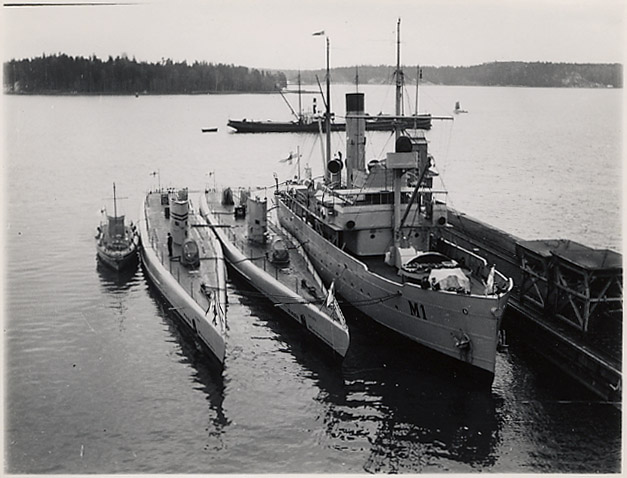
Vesihiisi class minelayers submarines and tender, prewar.
The Winter war saw duels between Soviet ships and Finnish coastal batteries at Hanko, Finland, Utö and Koivisto. At Koivisto and Hanko Soviet battleships were forced to retire, damaged. However submarines Vesikko and Saukko failed to sink a single Soviet capital ships. From December 1939, ice prevented any move of the fleet but preceded by ice-breakers. The two coastal defence ships sailed in Turku and were used for AA defence, painted in white, remaining there until the end of the war.
The Winter war saw duels between Soviet ships and Finnish coastal batteries at Hanko, Finland, Utö, and Koivisto. At Koivisto and Hanko Soviet battleships were forced to retire, damaged. However submarines Vesikko and Saukko failed to sink a single Soviet capital ship. From December 1939, ice prevented any movement of the fleet but ended up being circumvented by icebreakers. The two coastal defence ships sailed in Turku and were used for AA defence, were painted white, and remained there until the end of the war.
Praised at Spithead in 1937 for their beautiful lines, the two coastal battleships were initially deployed to the Åland Islands to prevent landings by Russian troops. Transferred to Turku (in Southern Finland) later they served as floating anti-aircraft batteries. The Continuation War saw them resume service, shelling the Hanko Peninsula base five times from July to November 1941. Ilmarinen later participated in Operation Nordwind (13 Sep 1941). On her way back she struck two naval mines, sinking within seven minutes and carrying with her 271 men, although 132 survived.
Submarines of the Vetehinen-class like the Vesihiisi laid mines on several occasions, sinking many ships in the process, and being one of the most successful allied submarines in that area.
Continuation War
Five MAS MTBs had been ordered from Italy for future operations against Russia. However, at the start of the conflict, the Hanko Peninsula’s Soviet base had command over the Gulf of Finland and effectively split the Finnish Navy in two. Coastal artillery positions at Russarö and Osmussaar guarded minefields barring the entrance to the Eastern Gulf of Finland. Later on, the Kreigsmarine assisted the Finnish Navy in laying large minefields and the Finnish coastal defence ships were soon back in action shelling Hanko until it was evacuated in December 1941.
Until 1945 all three belligerents laid some 69,779 mines and obstacles in the Gulf of Finland (16,179 by the soviets, 6,382 by the Finns, 45,000 by the Germans, including 3,000 magnetic mines). After the war, the area took until 1967 to be cleaned up effectively but estimations are still that hundreds of mines lay uncharted in the Baltic Sea. Soviet mines, in particular, claimed on September 13th, 1941, the coastal battleship Ilmarinen, the largest Finnish naval loss to mines in the war.
In 1942 anti-submarine warfare took preeminence over other operations for the Finns, with the axis fleets trying to deny Soviet submarines access to the Baltic Sea, which the mine barrier proved insufficient to prevent. Soviet subs managed to sink 18 ships, half of which being Finnish, although the latter claimed 3 of the 12 Soviet submarines operating in the area sunk. Anti-submarine nets were later placed between Naissaar and Porkkala, and the preventative measure was completed by the laying of new minefields that forced the Soviet ships to the eastern part of the Gulf of Finland until late 1944.
From the spring of 1942 Finnish control of the island of Gogland proved valuable while the Soviets failed at seizing the small island of Sommers, and the Finnish Navy received an addition of 14 new modern MTBs in early 1943. In 1944 a major soviet offensive saw Finnish troops at first holding their lines with a major factor in their defense being the close support of the Finnish Navy in the Gulf of Vyborg though they were later forced to retreat.
Lapland War
In September 1944 Finland switched sides, and attention shifted to the North, with German efforts to capture Suursaari (operation named Tanne Ost), failing in part because of the decisive action of Finnish MTBs. During the Finnish amphibious landing in Oulu, gunboats silenced German batteries, with their AA batteries fending off rare German air attacks while U-boats were chased out of the Baltic.
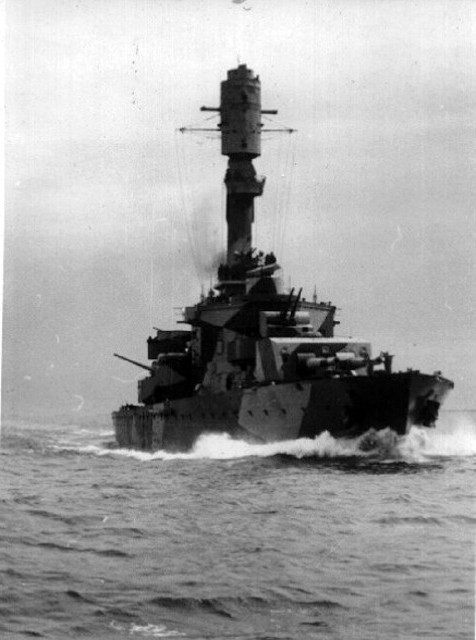
Camouflaged Väinämöinen, possibly in 1944.
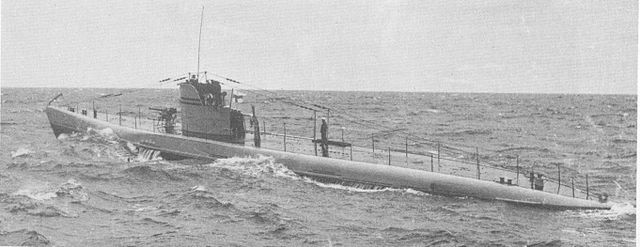
Finnish submarine Vesihiisi
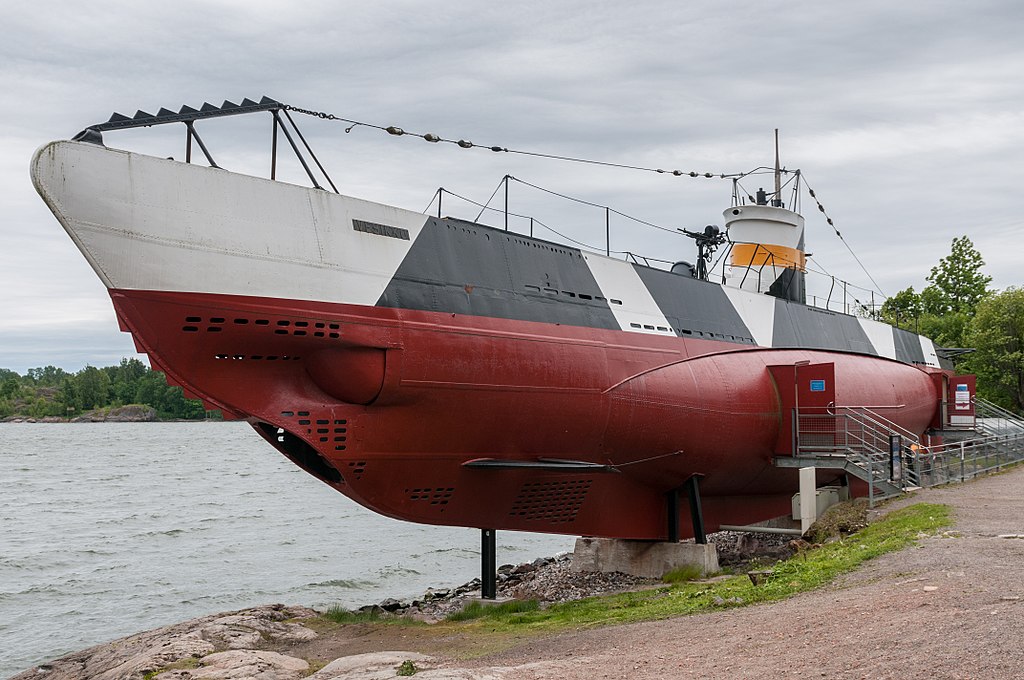
The Vesikko now preserved as a museum. She was the forerunner of all WW2 German coastal U-Boats (“U-Küst”).
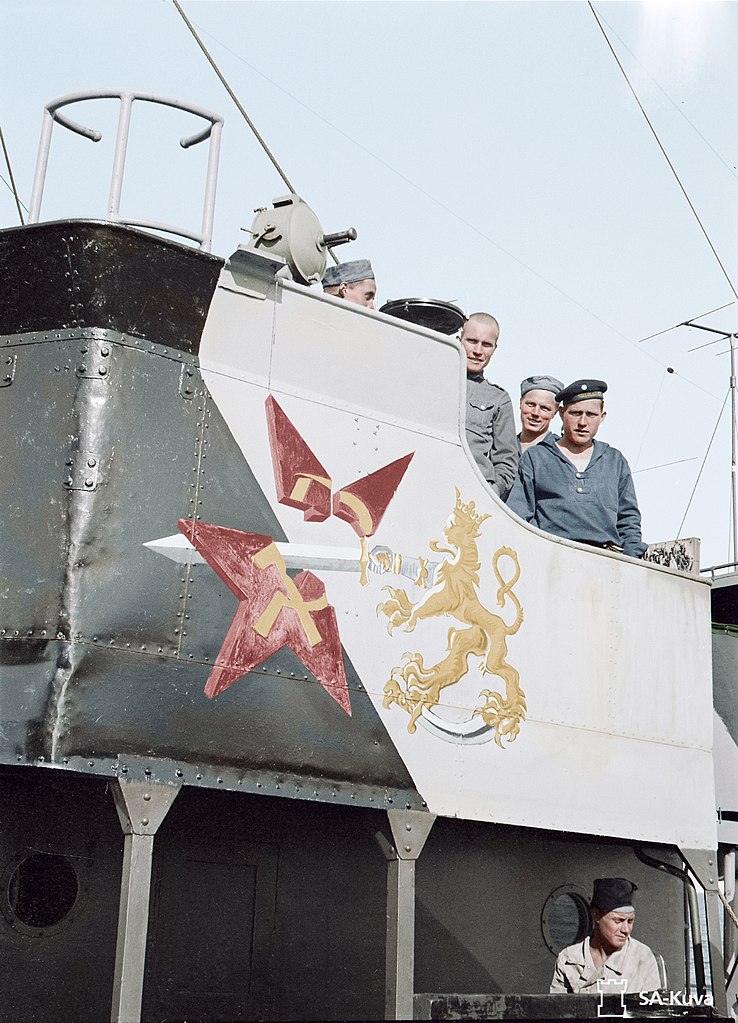
The Finnish Gunboat Hameenmaa 1942, colorized.
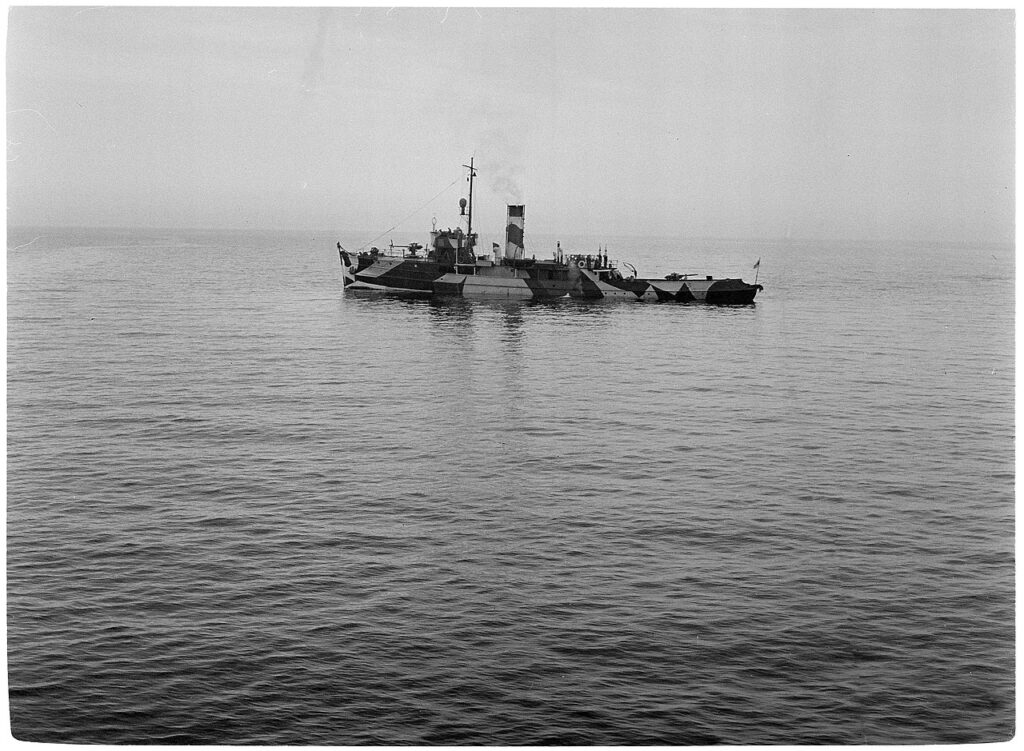
WW2 shipbuilding
Motor Launches VMV19-20 (1943), extant 1980.
Sources & links
Kijanen, Kalervo (1968). Suomen Laivasto 1918–1968 I/II [Finnish Navy 1918–1968, part I/II]. Helsinki: Meriupseeriyhdistys/Otava.
more….
On veteraanienperinto.fi/
erepo.uef.fi/handle/123456789/21239
About the Vainamoinen class “lighthouse battleships”
en.wikipedia.org/wiki/Finnish_Navy
navypedia.org finnish navy
web.archive.org/ dutchsubmarines.com/export/export_ivs.htm
Nomenclature of Finnish Vessels
 Vainamoinen class coastal battleships (1930)
Vainamoinen class coastal battleships (1930)
Väinämöinen, Ilmarinen
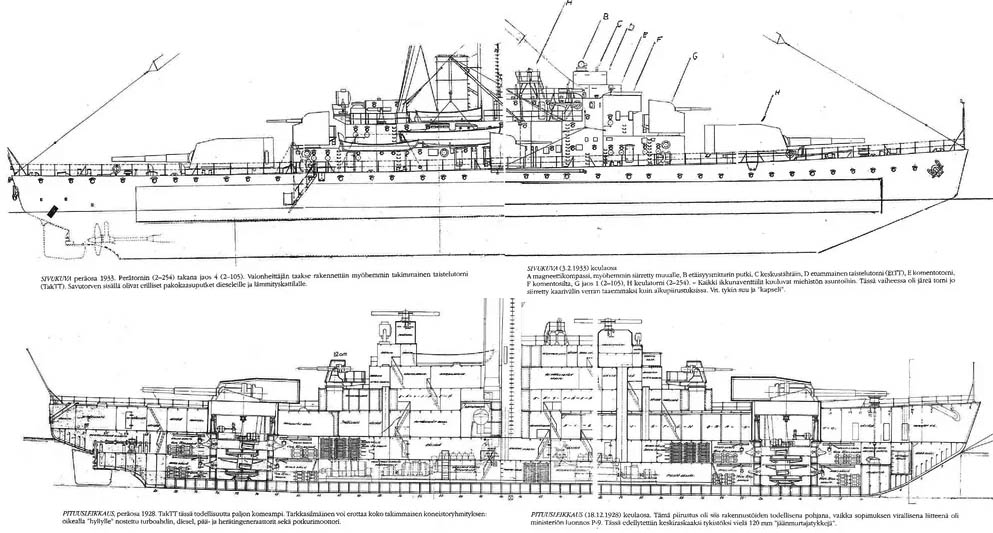
Like other Scandinavian fleets, Finland approached coastal defence with pragmatism, and ordered two coast defence ‘battleships’. The term is improper as the ships were tailored as a deterrence, not to wage war on open seas with other battleships. All that was needed was four battleship-size main guns, and sufficient armor to dealt heavy blows on any warship passing by. The combination was more efficient against cruisers of course, as the pair did not stand any chance against a Bismarck class ship. Vainamoinen, with her sister ship flagship Ilmarinen were actually built in Finland, at Crichton-Vulcan shipyard (Turku), launched in 1932. Note: Dedicated article to come in 2024.
 Saukko (coastal submersible) (1930)
Saukko (coastal submersible) (1930)

The rebirth of the German submarine industry after a total ban by western powers conducted to the establishement of a cover design office in the Hague, Netherlands, which provided plans and assistance for the construction of submarines to any country interested. Based on this, the Finns asked for a very small design (Pu110) not to exceed 100 tonnes to be deployed in Lake Ladoga. Indeed this limit was set according to the 1920 Treaty of Tartu. It was also to be split into separate sections to be transported by rail on situ. Saukko (“otter”) started constrcuction in 1928 at Sandvikens Skeppsdocka och Mekaniska Verkstad, Helsinki based on the German drawings of Pu110 project title “smaller, quickly assemblable submarine prototype”. She was launched on 2 July 1930, commissioned on 16 December 1930 and the world’s smallest submarine at the time with a crew of 15 and outer hull supporting icy conditions. She served her purpose and stayed active until 1947.
Specs: 114/142 tonnes submerged, 32.4 x 4.1 x 2.9 m (106 x 13 x 9.5 ft), one Germaniawerft diesel 200 hp (150 kW), one electric motor 120 shp (89 kW). 9 knots/5.7 knots range 375 nautical miles surfaced, 45 km (28 mi) submerged. Armed with two 18 in (460 mm) bow torpedo tubes (2 in reserve), a 12.7 mm AA GM and 6–9 mines.
 Vetehinen class submersibles (1930)
Vetehinen class submersibles (1930)
Vetehinen, Vesihiisi, Iku-Turso

Finland like Sweden and Denmark placed a premium on mines as a deterrence. One sure way to bloclade an enemy port without being seen was the submersible minelayer. Three were ordered as the Vetehinen-class, a 500-tonne German design provided by Ingenieurskantoor voor Scheepsbouw den Haag based on the UB-III/UC-III types, and built at Finnish Crichton-Vulcan shipyard in Turku. The class was based on the German World War I Type UB III and Type UC III submarines with vertical wells or mineshafts for 20 mines and special inner rails for two torpedo tubes and using 450 mm (18 in) torpedoes in addition to 533 mm (21 in) torpedoes. All three took part in the Winter war, Continuation War and Baltic Sea campaigns (1939–1945) and survived, scrapped in 1947.
Specs: 493/716 tonnes 63.5 x 6.2 x 3.6 m (208.3 x 20.3 x 11.8 ft). Diesel-electric, 1,016 hp (758 kW) 12.6/8.5 knots RA 1,575 nmi (2,917 km)/10 kts 75nm/4 kts sub. Crew 30, 4× 533 mm TTs (2 bow, 2 stern, 6 torps), 20 mines in vertical shafts, one 76 mm/48 Bofors, 20 mm/60 Madsen, 12.7 mm HMG AA, Depth charge rack (4 depth charges each) in 1942.
 Vesiskko class coastal submersibles (1932)
Vesiskko class coastal submersibles (1932)

The last Finnish submarine deployed in WW2 was another product Ingenieurskantoor voor Scheepsbouw den Haag which seeked to convince Finland to adopt a successor to the very small Saukko, larger and far more modern. Vesikko became esentially the prototype for the German Type II submarines. Six Type IIA submarines (U-1 to U-6) almost identical were built in the Deutsche Werke dock in Kiel and followed the Type IIB, IIC, and IID forming the bulk of coastal U-Boat force of Germany in WW2. Vesikko (“marder”). Built at Crichton-Vulcan, Finland had the primary purchase option until 1937, and the Finnish Government took her over in August 1934, then the Parliament approved the acquisition in 1936, and she joined the Finnish Navy, commissioned on 30 April 1934. She saw intense action until December 1944, survived the war and became a museum ship that can be visited today.
Specs: 254 t/303t up to 381 tonnes total, 40.90 x 4.076 x 4.026 m (134 ft 2 in x 13 ft 4.5 in x 12 ft 5 in).2 shafts Diesel-electric 350 PS, 2x El. motors 180 PS 13/8 knots RA 1,350 nmi or 40 nmi sub. Test depth 150 m crew 16. 2×6 Atlas Werke hydrophone, Gruppenhorchgerät, 3 × 53.3 cm (21 in) bow TTs, 20 mm/60 Madsen AA, 12.7 mm (1 in) HMG.
 Hämeenmaa class sloops (1918)
Hämeenmaa class sloops (1918)
Hämeenmaa, Uusimaa

Hämeenmaa (ex-Wulf, ex-Pingvin) and Uusimaa (ex-Bär, ex-Golub) were both from Kone-ja-Silta, Helsinki, ordered and laid down in 1916, launched 1917 and completed 1918, captured by the Germans, then transferred in 1920. Russia ordered six ships originally, only two launched before the revolution (The remainder sold to Chile). Passed onto the new Finnish state, they were armed with two 102mm/60, one 40mm/39 QF Mk II as gunboats. They were later reclassed as sloops. They served in WW2 as minesweepers in the gulf of Finland, rearmed in the 1930s with two modern 105mm/42 SK C/32, two 40mm/56 Bofors AA guns and a single 20mm/60 Madsen AA gun. They survived the war and were BU in 1953.
 Karjala class sloops (1918)
Karjala class sloops (1918)
Karjala, Turunmaa
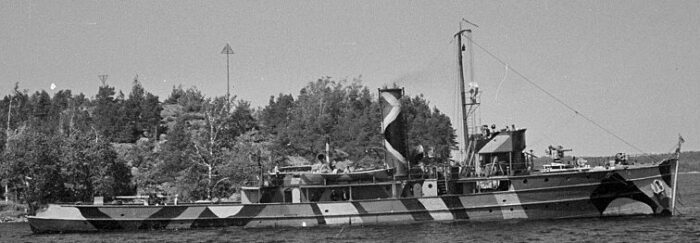
They were former Russian patrol boats of the Vodorez class, six ships, originally at Crichton-Vulcan, Aabo, incomplete when the revolution started. They were all were captured by the Finns and by 1921 Lun and Vodorez were sold to Poland, Gorlitsa and Sova were not advanced enough and BU, whereas Filin and Orlan were completed for the Finnish Navy as Karjala and Turunmaa, rated as gunboats and later rearmed in the interwar. Originally they had two 75mm/48 Canet guns and one 40mm/39 QF Mk II, and were used as minelayers (30 mines). In WW2 thay had in addition one 40mm/39 AA guns and three 20mm/60 Madsen AA guns. Like the Hämeenmaa class they were camouflaged. They patrolled and mined the gulf of Finland and survived the war, BU in 1953. Turunmaa on 2.5.1943 was attacked and badly damaged by Soviet aviation at Haapassaari, stranded under tow, but refloated, repaired and recommissioned in October 1943.
 2nd class minelayers (1900-1917)
2nd class minelayers (1900-1917)
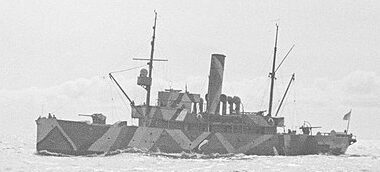
6 minelayers: Louhi, 1916, 776 t, ex-Russian Voin. Pommi, Miina (1916, 80t), Paukko, Lieska, Loimu (1915, 60t) all ex-Russian.
Louhi: M1 (ex-Воин [Voin]), 1936 Louhi: 640/776t, 50 x 8 x 2.70m, single funnel 1 VTE, 3 boilers 800 ihp 12 kts armed with two 75mm/48 Canet guns and 150 mines, two 40mm/39 QF Mk II, one 20mm/60 Madsen AA. Hit a mine and sank 12.1.1945 off Hanko.
T (Pommi) class (ex-M numbers (Teplokhod class): Loimu, Lieska, Paukku, Pommi, Miina. 34/60 tonnes 20.7 x 5 x 1.20m, 2 Bolinder semi-diesels 60ihp 7.2 knots.One 7.6mm/94 AA or 20mm/60 Madsen, 30 mines.
 Ruotsinsalmi class (1940)
Ruotsinsalmi class (1940)
Ruotsinsalmi, Riilahti
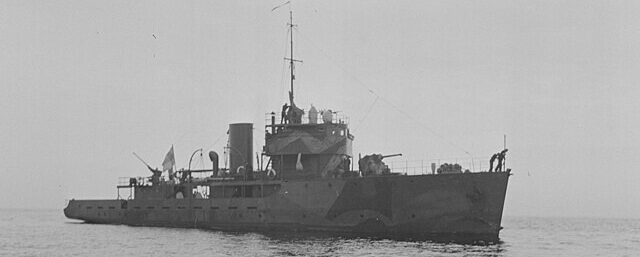
A pair of modern Finnish-built minelayers built at Crichton-Vulcan, Turku, built 1938-41.
Specs: 310 t, 50 x 7.9 x 1.5 m (164 ft 1 in x 25 ft 11 in x 4 ft 11 in), 2 shafts Rateau diesel 890 kW (1,200 bhp) 15 knots, crew 60, armament one 75 mm (3 in) 2× 20 mm Madsen AA, DCL, 3 rails, 100 mines. Riilahti was torpedoed and sunk on 23 August 1943, the other survived the war.
 Pukkio class minesweepers (1939)
Pukkio class minesweepers (1939)
Pukkio, Porkkala, Pansio*
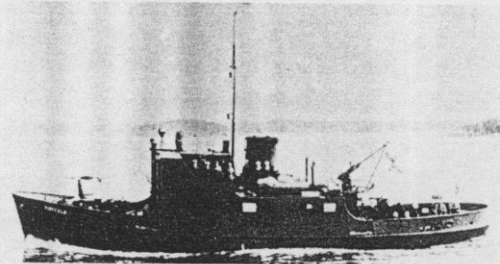
Pukkio, from conways.
Pukkio (1939) and Porkkala (1940) saw WW2 but not Pansio (1947) as resources were lacking at Valmet, Helsinki. They were usable as coastal liaison or transport vessels with full minelaying/minesweeping equipments. Their only action was to lay 37 contact mines (Porkkala) northwest of Tuppura, on 30 August 1941. She later hit mine on 28 November and sank. She was later refloated the next spring, repaired, recommissioned. They served until the end of the cold war as well.
Specs: 162t, 27 x 6.70 x 2.50, one 300 hp diesel 10kts, armed with a 45mm/43 21K, 2x 20mm/60 Madsen AA, 20+ mines and gear, later one 40mm/60 Mk 7, one 20mm/20 Mk 7.
 Vilppula class minesweepers (1916)
Vilppula class minesweepers (1916)
Vilppula, Vilppuri
T1, 2 built at Putilov Yd, Petrograd, former Russian minesweepers of Udarnik class resembling trawlers. Based at Helsingfors and Zashchitnik in April 1918, captured by the Finns recommissioned, renamed. Used in WW2 as depot ships for minesweepers. On 24 April 1944 Vilppula is sunk in Porkkala by a Soviet air attack (torpedoes).
Specs: 190/220t, 43.6 x 6.10 x 1.70m, 2 VTE, 2 Yarrow boilers 400 hp, 11kts, 18t oil, 1100nm/5 kts, one 75mm/48 Canet, one 47mm/40 Hotchkiss AA (later removed), two 7.6mm/94, one 20mm/60 Madsen AA, 30 mines, mechanical minesweeping gear, crew 35.
 Viipuri class minesweepers (1941)
Viipuri class minesweepers (1941)
No761 Viipuri, No762, No763, No764
Four Tugs built by Crichton-Vulcan under Soviet order. By June 1941 they were commissioned, and confiscated, recommissioned by the Finnish Navy. No761 became Viipuri. The others remained unnamed, they were used for patrols. To USSR 11.1944.
Specs: 335t, 31.6 x 7.50 x 4m, 1 VTE 368 shp 10 kts, armed with two 45mm/43 21K, 2x 12.7mm/79 DsHk, mechanical minesweeping gear.
 Ahven class minesweeping launches (1936)
Ahven class minesweeping launches (1936)
Ahven, Kiiski, Muikku, Särki, Kuore, Lahna
Six minesweepers constructed in 1936–1937 at Turun Veneveistämö Shipyard.
Specs: Displacement 17 tonnes, 17.2 x 3.7 x 1.3 m(56 ft x 12 ft 2 in x 4 ft 3 in). One shaft Diesel engine rated at 48 kw (65 bhp) 10.5 knots, armed with a single 20 mm (0.8 in) AA gun, crew 8. Discarded in 1961 at the time renamed Ahven 1-6.
 Kuha class minesweeping launches (1941)
Kuha class minesweeping launches (1941)
Kuha-1 to Kuha-18
The Kuha-class minesweepers were eighteen small minesweepers built in three batches 1941-1946 built by August Eklöf Ab, Porvoo, from 1941 and developed from the Ahven class, very similar in appearance. Kuha 1 was lost 3 November 1941, Kuha 3, Sunk off Suusaari by mines 30 Sept., 1944, Kuha 4, sunk by mine off Hanko 28 July 1940 or 23 July 1942, Kuha 6, was sunk off Kotka by mines on 15 Sept., 1944. Postwar where the batch 2 and 3 were completed they helped de-mining the gulf of finland.
Specs: 18 tons, 17.1 x 3.8 x 1.5m (56 x 12 x 5 ft) one diesel, shaft, 9 knots, one 20 mm Madsen AA gun.
 Rautu class minesweeping launches (1916)
Rautu class minesweeping launches (1916)
Rautu and Vilppula were ex-Kljuz class Minesweepers (Soviet Navy in Finland) captured in 1918. They had weak hulls and engines and were used as depot and test ships. Vilppula became T-2 and later Zashtshitnik, Rautu became Murman. On 5 December 1941 after Hanko was evacuated, they went in inshore seaways, Rautu and Louhi used as icebreakers for smaller minesweepers. On 25 July 1944 Vilppula and Merkurius were bethered near Porkkala when attacked by a soviet Douglas A-20 Havoc, both torpedoed sunk, later re-floated but never repaired. There were also the A37-45 class, BVA class, BVD class and Haukka class minesweeping (1916) 12 tons launches. Three were lost during the winter war.
 Ajonpää class minesweepers (1941)
Ajonpää class minesweepers (1941)
Ajonpää, Kallanpää
Ajonpää and Kallanpää were purchased from Denmark in 1942 during the Continuation War, intended for clearing influence mines. Both ships survived the war, discarded in 1960-1962.
Quick specs: 52 tons, 20 x 5.3 x 1.7 (65.6 x 17 x 5 ft 7 in) 200 hp (150 kW), 10 knots (19 km/h), one 20 mm Madsen AA
 Sisu class MTBs (1930)
Sisu class MTBs (1930)
Sisu, Hurja
2 class Sisu (1916, ex-Italian MAS 220-221, purchased 1920 as MTV1,2. The Sisu-class were constructed in 1916 by Orlando shipyard, Livorno, Italy, purchased in 1920, and so fast that when spraying water above aft, they were nicknamed the “the fountains” from Finnish sailors. On 1 October 1941 they patrolled east of Gogland when spotting a Soviet minesweeper of the Fugas class, Sisu missed with the first but the second hit her amidship. Both were used as torpedo boats until 1942, but transferred to Lake Ladoga as patrol vessel. They survived the war, BU in 1947.
 Isku (1926)
Isku (1926)
Single Thornycroft type motor torpedo boat constructed in 1926 at the Borgå varv, in Porvoo, Finland. She had her torpedoes released from the sides of the hull, not dropped from the stern. Winter War, Continuation War, stricken in 1942, due to extensive wear, moored at Suomenlinna, scrapped postwar.
 Nuoli/Syöksy class MTBs (1930)
Nuoli/Syöksy class MTBs (1930)
Syöksy, Nuoli, Vinha, Raju
Four class Nuoli (1928, Thornycroft, first pair, and design for the others). British Thornycroft type motor torpedo boats constructed in 1928 by John Thornycroft & Co. shipyard, Woolton, old WW1 style of stern first torpedo drop from rails aft. By 1942, they received individual identification symbols on their superstructures, ace of hearts, ace of clubs, ace of diamonds, and ace of spades.
On 6 July 1941 Syöksy and Vinha tried to catch a convoy off Hanko but in heavy seas the torpedoes failed. Syöksy, undeterred, dashed past the lead ship, dropping depth charges which sank the sailing ship. On the night of 19-20 July 1941 while off Estonia they were caught by a destroyer, Vinha was badlydamaged but still towed to safety, whereas Syöksy distracted the DD with her torpedo runs. On 1 September 1941 Syöksy and Vinha spotted two freighters off Beryozovye Islands, the lead vessel SS Meero, 1,866 tons, was sunk immediately, the other survived.
On 22 September Syöksy sank the Soviet minehunter T-41 east of Gogland with Vinha. On 1 October 1941 Nuoli co-claimed a Soviet minehunter, sunk by Sisu. Syöksy, Vinha and Vihuri also attacked the port of Lavansaari on 18 November 1942. The large gunboat Krasnoye Znamya (1,760 tons) was torpedoed and sank.
 Jimy class (1943)
Jimy class (1943)
The Jymy-class motor torpedo boats (J class) were Italian-designed and built at Cantieri Baglietto, Genoa, purchased on 5 June 1943. Based on the MAS 526 class.
They were given names, Jylhä (ex-MAS 526), Jyry (ex-MAS 527), Jyske (ex-MAS 528) and Jymy (ex-MAS 529). They took part in the last stages of the war. Postwar however the Paris Peace Treaty of 1947 forbade the country in having torpedo-carrying vessels they thet were converted as motor gunboats in 1949 with a 40 mm (1.6 in) gun, 35 knots, 22 tonnes, stricken 1961.
Specs: 25 tonnes, 18.7 m long 2x Isotta-Fraschini 2,000 bhp, 42 knots, 2x 450-mm torps. 20 mm, 12.7 mm Breda AA.
 Hurja class (1943)
Hurja class (1943)
The class comprised the Hyöky, Hirmu, Hurja, Hyrsky, and Häijy or “H” class. These were smaller, 20 tonnes, 36 knots MAS boats made by Cantieri Baglietto in Genoa specifically for Finland, unlike the former. 20 t, 16.5 x 4.3 x 1.5 m, 2× Isotta Fraschini 1,200 kW (1,600 bhp), two 450 mm torpedoes, one 20 mm (0.79 in) Madsen, 2 × 13 mm (0.51 in) AA, 2 DCR. No notable event. Postwar same treatment due to the 1947 treaty: Torpedoes removed, 40 mm gun added. They were discarded in 1963.
 Taisto class (1944)
Taisto class (1944)
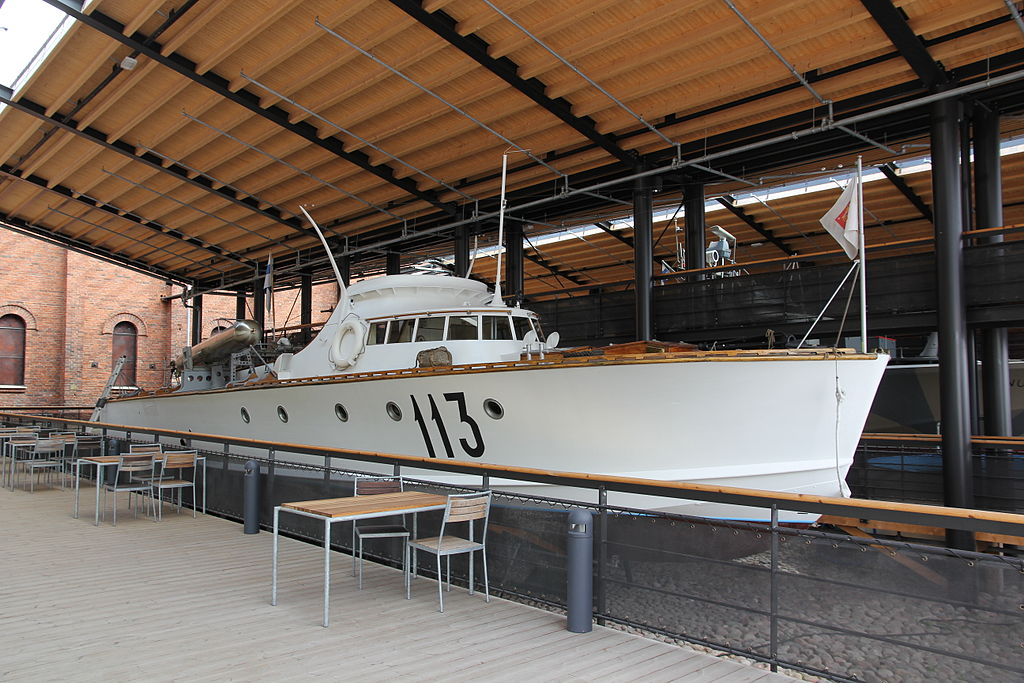
The eight Taisto (“T class”, T1 to T-8) were licence-built Baglietto MTBs in Finland, at Turun Veneveistämö. All eight were launched between 1943 and 1946.
Specs: 22 tonnes, 17.8 x 4.3 x 1.2m (58 ft 5 in x 14 ft 1 in x 3 ft 11 in), two Isotta Fraschini petrol engines, 1,700 kilowatts (2,300 bhp), 48 knots (89 km/h; 55 mph). Two 450 mm (18 in) TTs, one 20 mm (0.79 in) Madsen gun. Post 1947, same fate as the others, they were rearmed with a 40 mm Bofors. Discarded by 1964.
 SM class patrol Boats (1939)
SM class patrol Boats (1939)
SM boats were designed as training boats for the naval Civil Guard, completed for the Winter War, later used as minesweepers. SM-3 was lost on 5 October 1944 (mine). SM-1 and SM-4 were decommissioned in 1951 and SM-2 in 1954. Class: SM-1 to SM-4.
Specs: 20 tons, 18 x 3.8 x 1.7 m, power 80 hp (60 kW), 9 knots (17 km/h), 1× 20 mm Madsen AA.
 VMV class MTBs (1931-35)
VMV class MTBs (1931-35)

20 Motor Launches VMV1,2 (1931), VMV5-6 (1933), VMV8-17 (1935), VMV18-20 (1935)
The VMV boats were designed by dipl.eng. Jaakko Rahola, and had good seagoing qualities, fast speed, light construction using a wooden hull as well as insensible to magnetic mines. First out in December 1929 at U. Suortin Veneveistämö, Helsinki. Two ordered from Uudenkaupungin Veneveistämö one at Turun Veneveistämö, ten from Turun Veneveistämö, the last arriving by 1935.
The first VMV-1–VMV-7 had gasoline engines, the remainder until VMV-17, diesel engines. VMV-3 and VMV-7 were destroyed by fire before the war. All served with extra machine guns, depth charges and smoke dischargers but his veried dependong of the mission. Some has 4-6 naval mines or two 450 mm (18 in) torpedoes. Some were used as gunboats with a 40 mm Bofors and two 20 mm guns. They stayed coastal, did not took part in any major action during the Winter War but some fought for the control of islands on the Gulf of Finland. Five were lost in 1944 (air raids in Helsinki, Koivisto, Hogland). VMV-11 survived the war and has been preserved at the Kotka Maritime Museum.
Specs: 25 m (82 ft) 4.10 x 1 m (13.5 ft x 3 ft 3 in), 2× Maybach V-12, 1,220 hp (910 kW), 25 knots (46 km/h; 29 mph). Armament, see notes.
 Captured MTBs (1942-45)
Captured MTBs (1942-45)
Captured D3-class motor torpedo boat: Vasama, Ex-TK 52, found sunk at Borstö in October 1941, run aground in a storm. Repaired, used as a torpedo boat in 1943, then patrol boat and returned to USSR after the Continuation War.
Captured G-5-class motor torpedo boats: Vihuri, Viima, V-3. The first was the ex-TK 141 found abandoned at Koivisto in 1941, repaired and used in 1943. She took part in the attack on the harbour of Lavansaari on November 18, 1942. The second was ex-TK 64, found abandoned at Koivisto in 1941, same. V3 was Ex-TK 51 captured at the Bay of Vyborg in June 1944. Also returned to Soviet Union after the Continuation War.
 Finnish Armed Icebreakers (1916-42)
Finnish Armed Icebreakers (1916-42)
Murtaja, Sampo, Apu, Tarmo, Voima, Jääkahru, Otso, Sisu
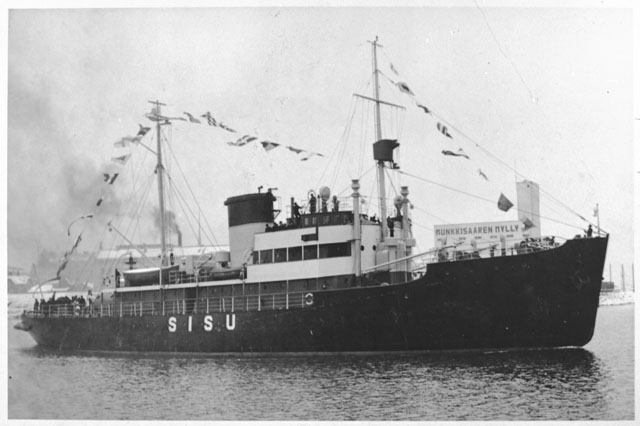
Sisu as built
Murtaja: Launched 1890, 815t, stricken 1958
Sampo: Launched 1898, 1850t, same.
Apu: Launched 1899, 800t, same.
Tarmo: Launched 1907, 2300t, same.
Volma: Launched 1917, 2070t, lost in action WW2.
Jääkahru:* 1926, 4825t, 78.45×19.3×6.4m, 2 shafts VTE 8 boil. 9800 ihp 18 kts, 4x102mm/60, 2x20mm
Otso: 1936, 900t, 44.81×11.8×3.25m, 1 shaft TE 1945ihp 13 kts, bow thruster, 1x75mm
Sisu: 1938, 2000t, 64.2×14.3×5.1m 2 shafts, bow thruster 3 Atlas Diesels 4000 bhp 15.8 kts, 2x102mm/60, 2x40mm AA.
*To Soviet Union 1945.
Notes: The Finnish Navy also deployed during the war the following:
Gunboat Aunus (ex-Kingston Emerald 1927): 310t, 1x 130mm/50, 1x40mm, 2x20mm AA
Gunboat Viena (ex Conan Doyle 1915): 303t, 1x 130mm/50, 3x20mm AA
Coast Guard vessel Tursas (1933): 360t, 12kts, 1x76mm, 1x40mm, 2x20mm
Presidential Yacht Aura (1884): 563t, 1x75mm, 2x20mm, sunk 13 Jan 1940 by Soviet sub. ShCh324.

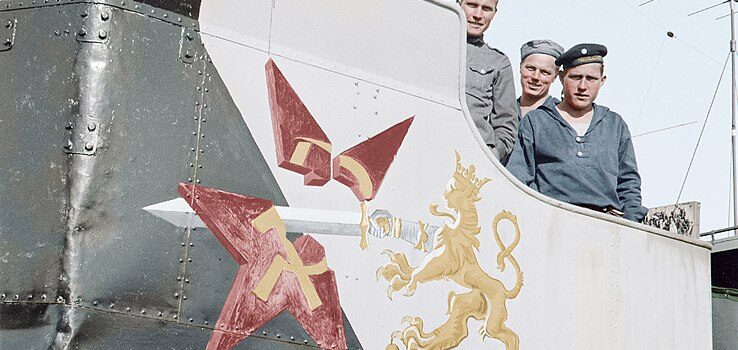
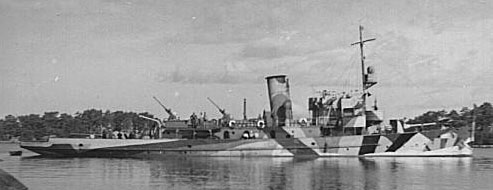
 Latest Facebook Entry -
Latest Facebook Entry -  X(Tweeter) Naval Encyclopedia's deck archive
X(Tweeter) Naval Encyclopedia's deck archive Instagram (@navalencyc)
Instagram (@navalencyc)





 French Navy
French Navy Royal Navy
Royal Navy Russian Navy
Russian Navy Armada Espanola
Armada Espanola Austrian Navy
Austrian Navy K.u.K. Kriegsmarine
K.u.K. Kriegsmarine Dansk Marine
Dansk Marine Nautiko Hellenon
Nautiko Hellenon Koninklije Marine 1870
Koninklije Marine 1870 Marinha do Brasil
Marinha do Brasil Osmanlı Donanması
Osmanlı Donanması Marina Do Peru
Marina Do Peru Marinha do Portugal
Marinha do Portugal Regia Marina 1870
Regia Marina 1870 Nihhon Kaigun 1870
Nihhon Kaigun 1870 Preußische Marine 1870
Preußische Marine 1870 Russkiy Flot 1870
Russkiy Flot 1870 Svenska marinen
Svenska marinen Søværnet
Søværnet Union Navy
Union Navy Confederate Navy
Confederate Navy Armada de Argentina
Armada de Argentina Imperial Chinese Navy
Imperial Chinese Navy Marinha do Portugal
Marinha do Portugal Mexico
Mexico Kaiserliche Marine
Kaiserliche Marine 1898 US Navy
1898 US Navy Sovietskiy Flot
Sovietskiy Flot Royal Canadian Navy
Royal Canadian Navy Royal Australian Navy
Royal Australian Navy RNZN Fleet
RNZN Fleet Chinese Navy 1937
Chinese Navy 1937 Kriegsmarine
Kriegsmarine Chilean Navy
Chilean Navy Danish Navy
Danish Navy Finnish Navy
Finnish Navy Hellenic Navy
Hellenic Navy Polish Navy
Polish Navy Romanian Navy
Romanian Navy Turkish Navy
Turkish Navy Royal Yugoslav Navy
Royal Yugoslav Navy Royal Thai Navy
Royal Thai Navy Minor Navies
Minor Navies Albania
Albania Austria
Austria Belgium
Belgium Columbia
Columbia Costa Rica
Costa Rica Cuba
Cuba Czechoslovakia
Czechoslovakia Dominican Republic
Dominican Republic Haiti
Haiti Hungary
Hungary Honduras
Honduras Estonia
Estonia Iceland
Iceland Eire
Eire Equador
Equador Iran
Iran Iraq
Iraq Latvia
Latvia Liberia
Liberia Lithuania
Lithuania Mandchukuo
Mandchukuo Morocco
Morocco Nicaragua
Nicaragua Persia
Persia San Salvador
San Salvador Sarawak
Sarawak Uruguay
Uruguay Venezuela
Venezuela Zanzibar
Zanzibar Warsaw Pact Navies
Warsaw Pact Navies Bulgaria
Bulgaria Hungary
Hungary

 Bundesmarine
Bundesmarine Dutch Navy
Dutch Navy Hellenic Navy
Hellenic Navy Marina Militare
Marina Militare Yugoslav Navy
Yugoslav Navy Chinese Navy
Chinese Navy Indian Navy
Indian Navy Indonesian Navy
Indonesian Navy JMSDF
JMSDF North Korean Navy
North Korean Navy Pakistani Navy
Pakistani Navy Philippines Navy
Philippines Navy ROKN
ROKN Rep. of Singapore Navy
Rep. of Singapore Navy Taiwanese Navy
Taiwanese Navy IDF Navy
IDF Navy Saudi Navy
Saudi Navy Royal New Zealand Navy
Royal New Zealand Navy Egyptian Navy
Egyptian Navy South African Navy
South African Navy






























 Ukrainian Navy
Ukrainian Navy dbodesign
dbodesign